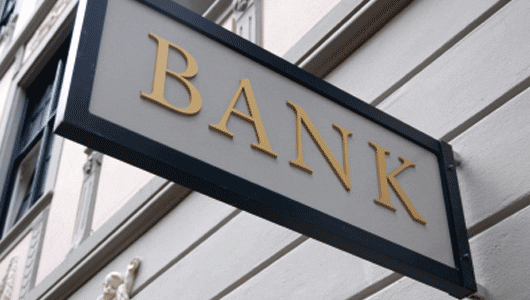The cloud of uncertainty around huge US Department of Justice fines for their role in the sub-prime mortgages scandal is finally clearing for RBS and Barclays. In March, Barclays arrived at a £1.4 billion settlement deal with US authorities. This morning it has been confirmed that RBS has reached its own deal, albeit on that is currently still officially ‘provisional’.
The $4.9 billion (£3.61 billion) figure that has been agreed upon in principal is significantly below the mooted bill of closer to $10 billion (£7.36 billion) that many analysts had feared. It means RBS, which is still 71% owned by the public purse, stands every chance of being able to post a profit for the year. With $4.4 billion already set aside as a provision to pay the impending fine, the additional $500 million that requires topping up should prove relatively painless.
Barclays still has a couple of skeletons in the closet that need to be evicted before investors will truly begin the process of forgiving the scandal hit financial institution. The Serious Fraud Office is still looking into payments allegedly received by Qatari investors and considered likely connected to a fundraising drive 10 years ago. PPI compensation payments, which RBS has not set aside any additional funds for in indication the bank believes its bill in that regard has practically speaking been settled, are still flowing out of Barclays. However, the worst of a bad decade seems to be over for Barclays too.
So, is it time for those investing online in ISAs and SIPPs to start weighing up the option of taking the plunge and buying shares in Barclays and RBS ahead of a potential upswing? What do both banks have going for them and what are the risks involved in potentially moving ahead of the main market sentiment?
RBS: RBS’ share price has gained over 12 pence since last Tuesday, up to 293.84 p a share from 271.6 p a share less than a week ago. However, despite strong gains since March, posting a return to profit in 2017 (£752 million), and this morning’s announcement of the provisional deal being reached with the DoF, RBS’ share price is still below its year high set in January. It’s also significantly below the 330p level at which the government sold the first tranche of its stake back in 2015.
With 162 branch closures and other cost-cutting restructuring measures announced in February, costs are coming down. RBS is also on target to implement the ‘ring fence regime’ as planned by 1st January 2019. Settling the DoF uncertainty also means RBS might reintroduce dividend payments in the near future.
However, the regulator’s ongoing investigation into alleged malpractice at the bank’s now closed Global Restructuring Group could result in a fine significantly above the £400 million already provisioned for. That’s before the possible reputational damage if findings are especially murky.
Over the next 12 months, the upper range of analyst price targets for RBS shares are 346p, a 17% improvement on today’s level. The middle range is 2.2% growth to 300p and the negative outlook a 10% slide to 265p. All told, RBS shares still looks a risky bet.
Barclays: the bank’s investment banking unit, the result of the purchase of Lehman Brothers, currently looks attractive. Current CEO Jes Staley is much more enthusiastic about the investment side of banking than predecessor Antony Jenkins, whose focus was on retail. However, the investment banking unit is central to Staley’s roadmap for Barclays. As long as the US economy is powering ahead, this is likely to be a key advantage for Barclays over European peers.
Barclays is more than doubling its dividend to 6.5p this year and it is thought further investor giveaways will be forthcoming now that major restructuring is drawing to a conclusion. Ring fencing of the bank’s retail division has been completed a year ahead of schedule. Barclay’s is now expected to refocus its energies on its profitable credit card franchises and trading. Operating expenses continue to be reduced and earnings and cash returns look on course to be healthy by 2020.
At 214.45 p a share, Barclays is currently trading at a modesty multiple of 8 times forecast earnings for 2019. The optimistic analyst consensus for the next twelve months is for Barclays’ share price to gain 23.65% to 265p. The middle estimate is for 8.4% growth to 232.5. However, there is considered to be more downside risk than is the case for RBS, with the negative analyst forecast for a 34.7% plunge to 140p a share. That largely depends on the findings of the Global Restructuring Group probe. One for investors with some appetite for risk but the positive scenario could lead to strong returns.


